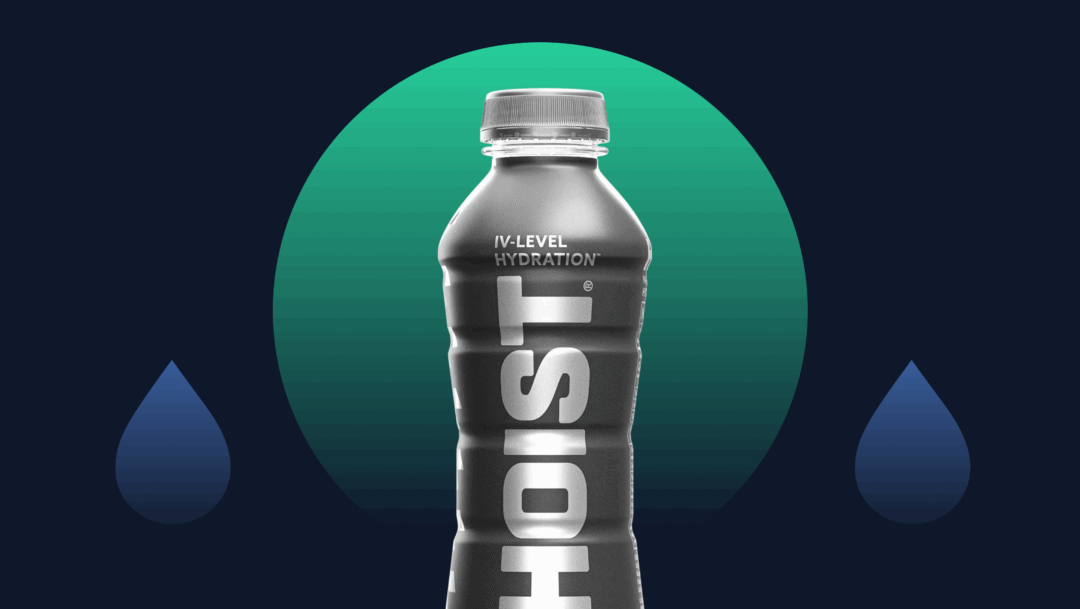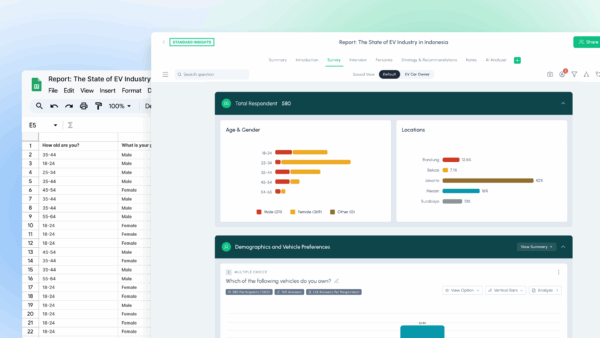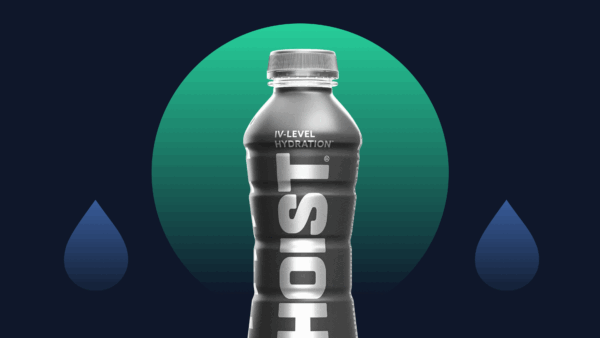Picture this: You’re at the gym, exhausted after a workout, standing in front of the cooler. Fifteen different hydration drinks with flashy colors stare back at you, each promising optimal performance, superior electrolytes, or game-changing formulas.
Blue, Red, Orange, Yellow. They all look… the same.
Which one do you choose?
The Overwhelming Hydration Landscape
Search “electrolyte drinks” on Walmart.com and you’ll find over 1,000 products. The category has exploded beyond traditional bottles into powders, tablets, ice pops, gummies, and concentrates. Every possible flavor combination exists—from classic lemon-lime to exotic dragon fruit.
In this $40+ billion market, brands are already maximizing every traditional lever:
- Fighting for eye-level shelf placement
- Perfecting packaging design
- Expanding SKUs across formats
- Optimizing flavor profiles
But when everyone’s playing the same game, how do you actually stand out?
The answer lies in a marketing principle that goes beyond product features: brand association.
If you’re unfamiliar with the term, here’s a complete guide on what brand association is and how to build one.
Case Study: How Hoist Weaponizes Brand Association
While competitors battle over shelf space and flavors, Hoist chose a different battlefield: military association. But this isn’t a casual partnership mention—it’s a complete brand transformation. Even more striking when you know the brand originally started as a hangover cure.
Every Touchpoint Reinforces the Association
“Military-grade drink” is boldly featured on bottles and packaging. Some bottles feature camouflage patterns and patriotic flags, while military symbols are omnipresent in their branding and communication.
But it’s not only visual—their verbal strategy is equally strong. They don’t speak about hydration but “military hydration.” They don’t tell you to subscribe monthly but to “keep the supply drop coming.”
Let’s just have a look at the homepage:

Hoist partners with athletes and influencers—primarily military personnel, first responders, and high-performance individuals. Their commitment to the military theme is so complete, they even gave a camouflage uniform to Santa.
Hoist’s focus on military association is deep, but it isn’t entirely unique in the hydration space. For example, JOCKO FUEL leverages its founder’s Navy SEAL background and public persona to build credibility, though for Jocko, military roots are just one part of a broader message around discipline and self-improvement. In contrast, Hoist makes the military connection the centerpiece of its entire brand ecosystem.
As a general rule, the wider your association is, the less authentic it appears.
This creates a powerful halo effect:
- Military-grade → Implies rigorous testing and reliability
- Trusted by soldiers → Must perform under extreme conditions
- Military values → Discipline, honor, no compromise on quality
The Association Arms Race: How Everyone’s Playing
Hoist isn’t alone in leveraging brand association. Every major player has chosen their battlefield:
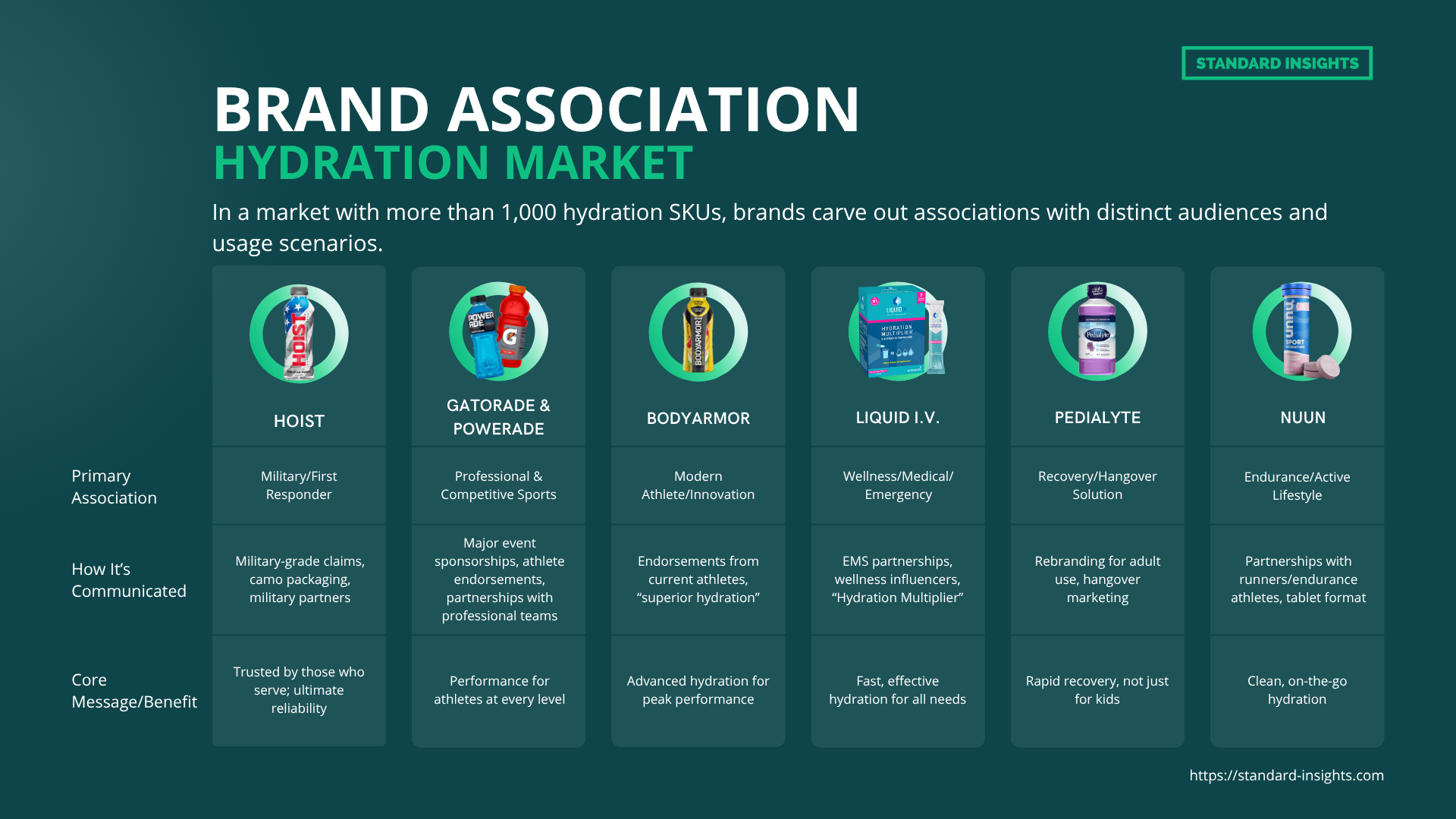
You get it—brands associate their products with people, value, needs, and actions.
Military Association Beyond Hydration
Hoist isn’t the only brand to leverage military association successfully:
- 5.11 Tactical: Started making pants for FBI, expanded to military/law enforcement
- Luminox: “Navy SEAL Watch” branding with official timepiece partnerships
- Black Rifle Coffee Company: Veteran-owned, built a coffee empire on veteran culture
- The General Hot Sauce: Veteran-owned, their packaging are grenade-shaped (how cool is that?)
And many others have found success using this powerful association.
Lessons for Brand Marketers: The Power of Strategic Association
1. Association Beats Attribution
In crowded categories, what you stand for matters more than what you claim. While Hoist explains the science behind their products and why they believe it’s the best, they don’t make it the heart of their communication. They don’t need to list why they’re reliable—military association implies it.
Telling customers your brand is “the best” rarely cuts through the noise. The real question: What will you associate your brand with that makes “the best” believable?
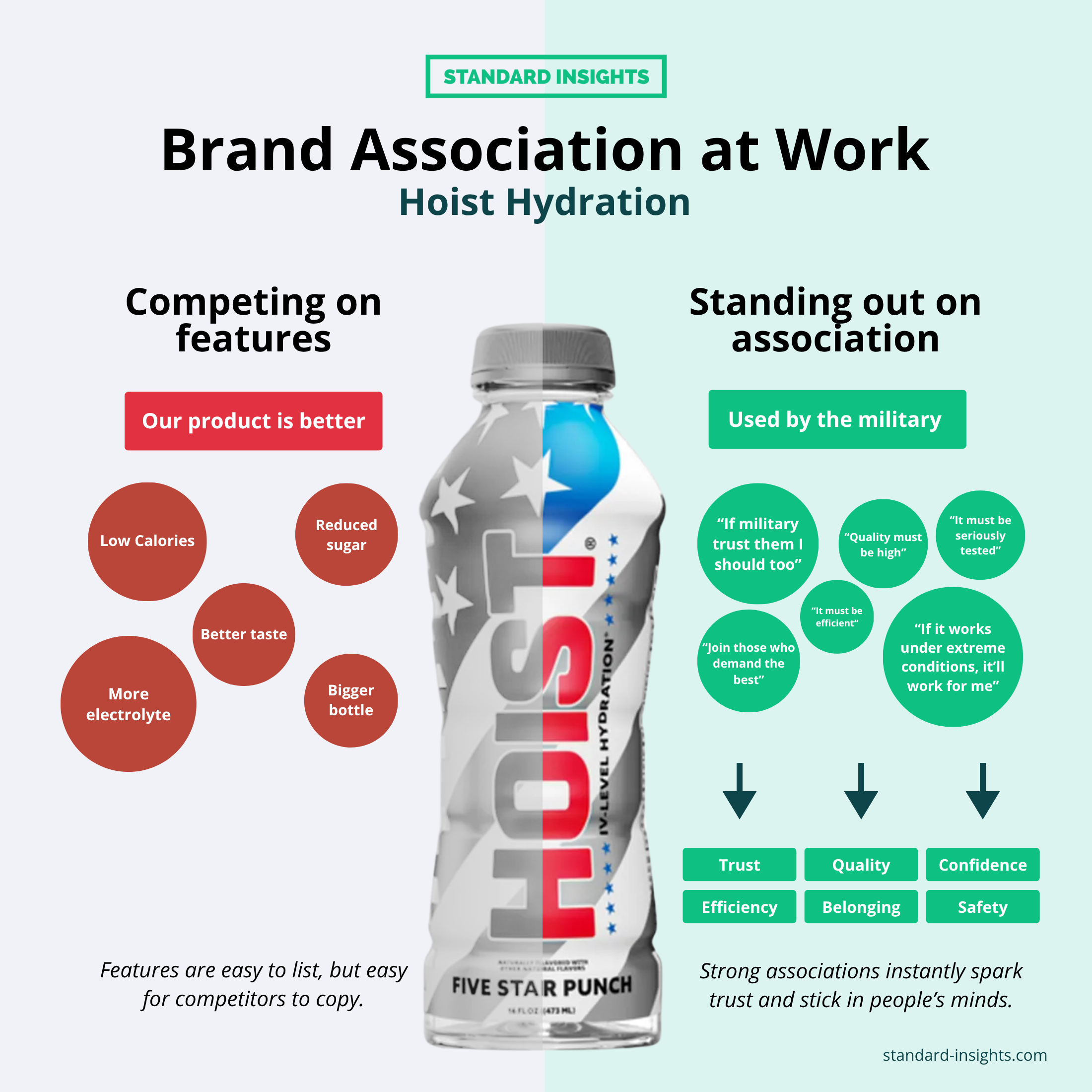
2. Consistency Amplifies Impact
Half-hearted associations feel inauthentic. Whether it’s sustainability, performance, or luxury, your chosen association must permeate every brand touchpoint. Hoist association is not a marketing trick. It’s the essence of what they are. Only when your messaging and actions align does your association gain credibility and power.
Remember BP’s “Beyond Petroleum” campaign? Despite spending millions to associate with renewable energy, the disconnect between their green messaging and oil-dominated business felt forced, leading to the abandonment of this campaign. Authentic association requires full commitment.
3. Choose Associations That Scale
The best associations create halos that enhance multiple product attributes. Military association makes Hoist seem tougher, more reliable, AND more trustworthy—three benefits from one association.
4. Monitor Your Halo
Track which associations are driving purchase decisions. Almost every positive association can create unexpected negative perceptions elsewhere. Hoist knows not everyone appreciates military association, and they’re fine with that. Sometimes, abandoning one segment strengthens your hold on another.
Remember Ronald McDonald? The famous clown of McDonald’s created associations of family joy and happiness, but they retired him just before the “scary clown” cultural crisis (thanks to It and others). Timing your association’s evolution matters.
5. Associations Can Define Categories
Sometimes the right association doesn’t just differentiate you—it creates an entirely new subcategory. “Military-grade hydration” didn’t exist before Hoist. Consider AG1. Instead of marketing itself as just another multivitamin or greens powder, AG1 positioned itself as a “foundational daily nutrition” solution.
The Strategic Takeaway
In a category with 1,000+ products, traditional differentiation reaches diminishing returns. Another flavor, another formula, another package design—these incremental improvements get lost in the noise.
Brand association cuts through because it works at a deeper psychological level. When Hoist says “military-grade,” they’re not just describing a product—they’re transferring an entire set of values and expectations to their brand.
The lesson for marketers? You can’t opt out of brand association—if you don’t shape it, your audience (or your competitors) will do it for you. The real strategic question is: What do you want your brand to mean in the minds of your customers?
To build an association that sticks, start with data. Surveys, interviews, or ideally brand health tracking, gives you a clear, actionable view of how your brand is perceived—so you can shape the associations that drive real results.
Brand association is just one of 20+ metrics that reveal what’s really driving purchase decisions in your category.
Ready to discover which associations are helping (or hurting) your brand? Track your brand associations with real category buyers and see exactly how you stack up against competitors on the attributes that actually drive sales.

